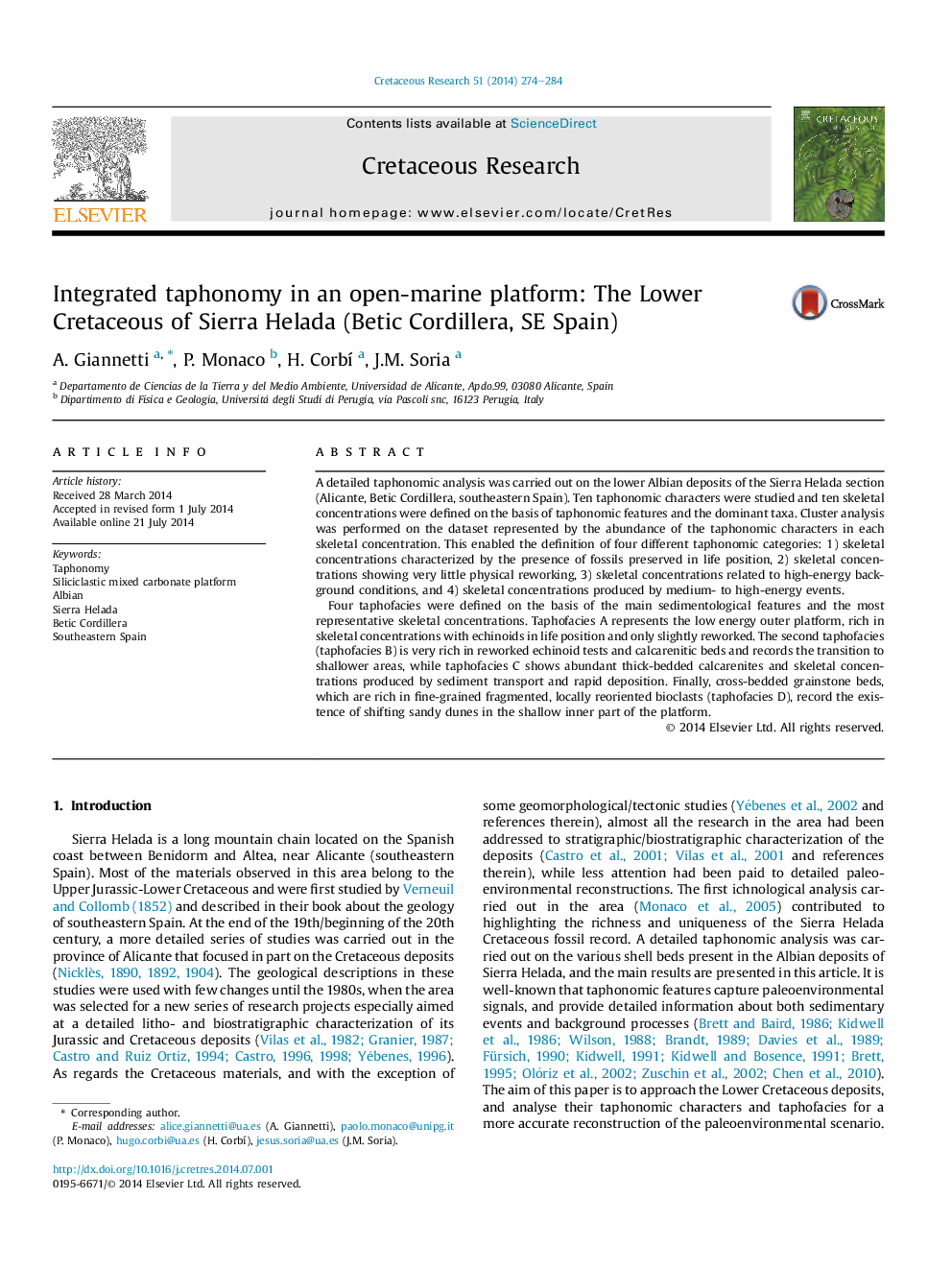| کد مقاله | کد نشریه | سال انتشار | مقاله انگلیسی | نسخه تمام متن |
|---|---|---|---|---|
| 4747046 | 1642071 | 2014 | 11 صفحه PDF | دانلود رایگان |

• We carried out taphonomic analysis of the lower Albian deposits of Sierra Helada, SE Spain.
• We studied 10 taphonomic characters and defined 10 skeletal concentrations (SkC).
• Through cluster analysis we grouped SkC into four taphonomic categories.
• We defined four taphofacies representing distal to proximal platform subenvironments.
A detailed taphonomic analysis was carried out on the lower Albian deposits of the Sierra Helada section (Alicante, Betic Cordillera, southeastern Spain). Ten taphonomic characters were studied and ten skeletal concentrations were defined on the basis of taphonomic features and the dominant taxa. Cluster analysis was performed on the dataset represented by the abundance of the taphonomic characters in each skeletal concentration. This enabled the definition of four different taphonomic categories: 1) skeletal concentrations characterized by the presence of fossils preserved in life position, 2) skeletal concentrations showing very little physical reworking, 3) skeletal concentrations related to high-energy background conditions, and 4) skeletal concentrations produced by medium- to high-energy events.Four taphofacies were defined on the basis of the main sedimentological features and the most representative skeletal concentrations. Taphofacies A represents the low energy outer platform, rich in skeletal concentrations with echinoids in life position and only slightly reworked. The second taphofacies (taphofacies B) is very rich in reworked echinoid tests and calcarenitic beds and records the transition to shallower areas, while taphofacies C shows abundant thick-bedded calcarenites and skeletal concentrations produced by sediment transport and rapid deposition. Finally, cross-bedded grainstone beds, which are rich in fine-grained fragmented, locally reoriented bioclasts (taphofacies D), record the existence of shifting sandy dunes in the shallow inner part of the platform.
Figure optionsDownload as PowerPoint slide
Journal: Cretaceous Research - Volume 51, September 2014, Pages 274–284